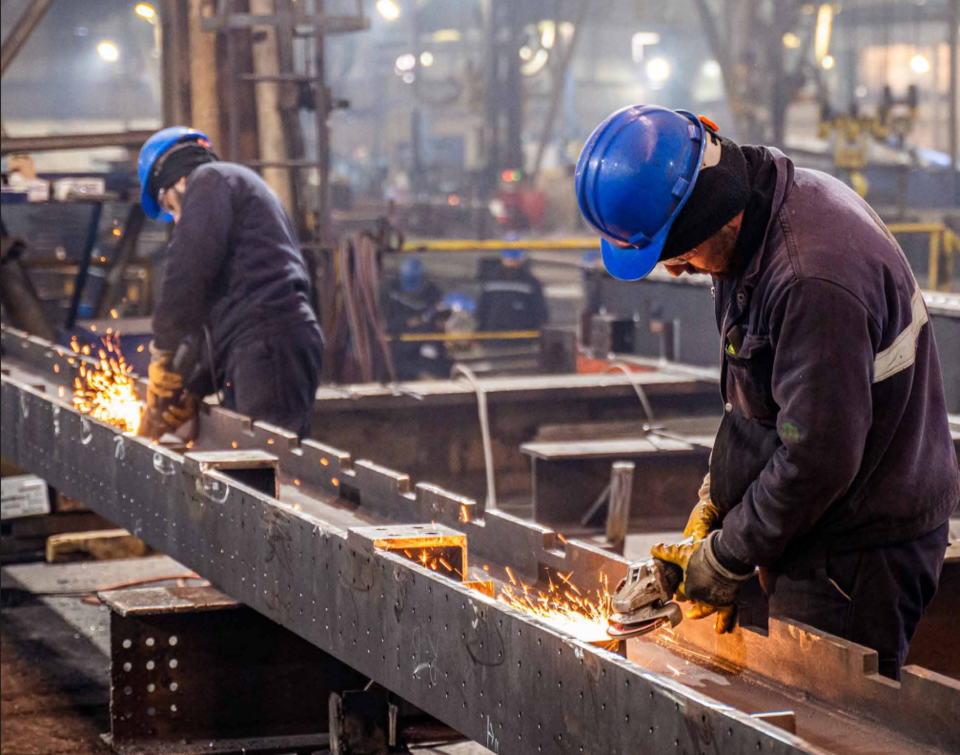Ontario manufacturers continue to face a chronic shortage in filling the workforce ranks as experienced skill workers sail off into retirement, says a new report from the Canadian Manufacturers and Exporters (CME).
In southern Ontario, the impact of the U.S. trade war will surely result in significant job losses on the manufacturing side, in the CME report said, which places this sector at a “crucial crossroads.”
Yet opportunity abounds in Northern Ontario, especially in places like Sudbury, which is poised to see significant growth in manufacturing due to the global demand for critical minerals.
The situation was highlighted in the CME’s report, titled Keep Calm and Keep Training. CME is an industry advocacy group representing about 2,500 leading companies engaged in manufacturing and exporting.
The findings were based on the feedback received during CME-hosted discussion tables across Ontario from manufacturers, industrial suppliers, post-secondary institutions, labour planning boards, municipalities and unions. In Northern Ontario, meetings were staged in Sault Ste. Marie, Sudbury and Thunder Bay.
Despite all this promise, Northern Ontario faces unique workforce development barriers influenced by geography, industrial makeup and demographic trends.
The report said Ontario’s overall workforce was “flat” compared to the previous year when companies’ hopes were buoyed by low inflation and interest rates. That mood soured heading into 2025 with the threat of U.S. tariffs that froze corporate decision-making.
Forty per cent of manufacturers in Ontario have frozen spending on projects due to the threat of U.S. tariffs, 28 per cent have delayed hiring, and 28 per cent have started seeking alternative markets.
With companies hesitant on investing in training, that’s hampered long-term regional workforce strategy and development. So workers and their families don’t see a future in manufacturing since there’s no commitment to training programs.
And Ontario’s manufacturing workforce is not getting any younger. One in four factory workers was 55 or older in 2024. The manufacturing sector is projected to face 22,500 retirements a year through 2033, so the search will continue for skilled workers such as electricians and millwrights.
The trainers themselves — the colleges and universities — aren’t having an easy time either.
Due to the sharp reduction in international student numbers, many post-secondary institutions are cutting back on critical programs. Over the next two years, colleges alone are expected to lose between 75,000 and 128,000 students. That translates to a 25 per cent to 40 per cent drop in total enrollment.
In this region, the critical minerals sector represents an encouraging opportunity, the report said.
Sudbury’s ace in the hole is its mineral processing capacity, particularly its one-of-a-kind nickel refining capacity.
Given the demand for minerals and a national effort to reduce Canada’s dependence on China, which has a stranglehold on global critical minerals processing, this value-added manufacturing base could expand the city’s industrial and population base.
However, Northern industries struggle to attract talent and are leaning on immigration to fill the workforce gaps.
A widespread perception that surfaced during these stakeholder meetings is that Northern Ontario’s economy is a “closed one,” offering little labour mobility when compared to southern Ontario. Skilled workers in the North, believing there is limited long-term job prospects here, often leave for the south.
That results in industries relying on immigration programs like the Rural and Northern Immigration Pilot (RNIP) to fill the ranks.
On top of that, there is competition among employers, in mining and infrastructure development, to entice skilled workers away from manufacturing.
Stakeholders told the CME that the collaboration that should exist between industry and trainers is limited. Companies are working in silos rather than pooling resources to train workers for high-demand jobs in welding and engineering.
Great emphasis at these stakeholder meetings was placed on finding ways to attract Indigenous young people into manufacturing, particularly in placing them with Indigenous-owned businesses.
In Thunder Bay, meeting attendees stressed the importance of GTA transit authorities, like Metrolinx and the Toronto Transit Commission, being predictable in procurement policies to provide steady work for the local Alstom (formerly Bombardier) rail coach assembly plant.
That predictability would go a long way toward setting the conditions for long-term workforce development, stakeholders said.
The report puts forward some ideas to turn the tide in Ontario’s favour.
- support workforce development in businesses — by improving incentives for employers to offer on-the-job training opportunities, addressing obstacles causing apprentices and students to abandon the sector;
- properly resource education programs aligned with the needs of manufacturers; and
- use Ontario’s diversity as a competitive advantage — attracting more under-represented women, Indigenous people and immigrants with in-demand skills.




